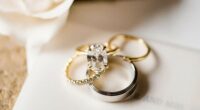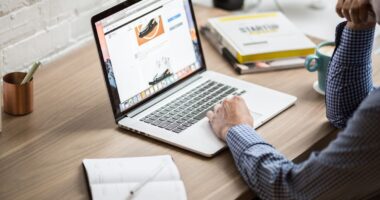So you want to get into producing ephedrine at home, huh? Before you dive into this chemistry project, there are a few things you should know.
Ephedrine is a precursor for methamphetamine, so making or selling it without a license can land you in jail. But if you’re determined to go through with this, you’ll need to start with some basic equipment and ingredients.
The first thing you’ll need for ephedrine manufacturing is a decent home lab setup – we’re talking glassware like flasks, beakers, and a reflux apparatus, as well as a heating mantle, vacuum pump, and pH meter.
You’ll also want protective gear like goggles, gloves, and a vent hood. The key ingredients are norephedrine, methylamine, and a solvent like isopropanol or ethanol.
With the right equipment, precursors, and some patience, you can carry out the necessary chemical reactions to produce ephedrine hydrochloride, the form found in many over-the-counter cold medicines.
Of course, there are many steps involved and it can be a dangerous process if you’re not trained in organic chemistry. But now you know the basics to get started – the rest is up to you. Good luck and be safe!
How Is Ephedrine Made and Extracted?

So, you want to produce ephedrine, huh? It’s actually not that complicated, but there are a few things you’ll need to know.
Ephedrine is extracted from ephedra plants, mainly Ephedra sinica. The plants contain ephedrine alkaloids, primarily ephedrine and pseudoephedrine. To extract the ephedrine, the plants are dried and ground into a powder.
An organic solvent like methanol or ethanol is then used to dissolve the ephedrine from the plant matter.
The solution is filtered and the solvent evaporated to yield ephedrine crystals. Alternatively, the ephedra powder can be boiled in water, and the resulting liquid filtered and reduced to produce ephedrine extract.
You’ll need a few basic supplies:
- Ephedra plants – you can buy ephedra seeds or cuttings and grow your own. Ephedra sinica is the most potent.
- Solvent – methanol, ethanol, or distilled water
- Filtering equipment – filter paper, cotton cloth, or a sieve
- Evaporating/reducing equipment – a double boiler or stovetop, pans or pots, a water bath
- Protective gear – goggles, gloves, mask, apron
The extraction and crystallization process requires time and patience. Expect it to take 8-12 hours to complete for a small batch.
The ephedrine crystals or extract can then be crushed into a powder for various uses.
Of course, ephedrine production is illegal for individuals in many places due to regulations, so check your local laws first.
But if it’s allowed where you are and you have a legitimate need for it, producing ephedrine at home can be done. Be very careful if you give it a try!
Ephedrine Synthesis: Chemical Reactions and Processes

Producing ephedrine at home is not easy, but with the right equipment and know-how, it’s possible.
The basic process involves extracting ephedrine alkaloids from ephedra plant material and then synthesizing them into ephedrine HCl, the form typically used in medications.
Ephedra Extraction
First, you’ll need dried ephedra sinica stems, leaves and roots which contain ephedrine alkaloids. Grind the plant parts into a coarse powder.
Then, perform an acid-base extraction using chemicals like hydrochloric acid, sodium hydroxide, and non-polar solvents such as toluene or xylene.
The result will be an ephedrine freebase oil.
Conversion to Ephedrine HCl
Next, you’ll convert the freebase to ephedrine HCl. This involves reacting the freebase with hydrochloric acid gas in an organic solvent like isopropyl alcohol or ethanol.
Bubble the gas through the solution for several hours. Then evaporate the solvent to obtain crude ephedrine HCl crystals.
Purification
Finally, recrystallize the crude product in isopropyl alcohol to further purify the ephedrine HCl. Filter and wash the crystals to remove impurities. Let the crystals dry completely. If done properly, you’ll have produced ephedrine HCl with a high degree of purity.
Home ephedrine production is challenging and time-consuming, not to mention illegal for good reasons. But for those determined to DIY, the basic steps boil down to extraction, conversion, and purification.
With the right equipment, a working knowledge of organic chemistry, and a lot of patience, small-scale ephedrine synthesis at home is possible.
Regulations and Legalities Around Ephedrine Manufacturing

Producing ephedrine in the U.S. is highly regulated and in some cases illegal, depending on how you obtain the chemicals and what you intend to do with the ephedrine.
Before attempting to manufacture ephedrine, understand the laws and regulations surrounding it.
Regulations
Ephedrine is listed as a List 1 chemical by the DEA, meaning its manufacture and sale are strictly controlled. You’ll need a permit from the DEA to produce ephedrine legally. Producing ephedrine without a permit can lead to legal consequences like fines and even jail time.
Some states have additional restrictions on ephedrine. For example, in Oregon, ephedrine cannot be sold as an over-the-counter drug.
Check with your state laws to ensure you follow all regulations. If you want to sell ephedrine products across state lines, you must register with the DEA.
The amount of ephedrine you can buy at one time is also restricted to prevent its use in producing methamphetamine. Purchases are tracked and monitored. Buying large amounts of ephedrine or any of the precursor ingredients used to make it may lead to legal investigation.
Legal Uses
Ephedrine does have some legal uses, like treating asthma, low blood pressure, and nasal congestion. If you obtain the proper permits and follow regulations, you can legally produce ephedrine for these purposes.
However, the DEA monitors how much ephedrine is produced and where it’s distributed to prevent illegal activity. They can revoke permits if regulations aren’t followed.
As with any regulated chemical, fully understanding the laws around ephedrine before attempting to produce it will help you avoid legal trouble.
Following all federal and state regulations, obtaining the necessary permits, and only producing ephedrine for legitimate medical purposes are key to staying on the right side of the law.
Conclusion

Well, that’s really all there is to know about producing ephedrine in a homemade lab. It may seem complicated, but if you take it step by step and are meticulous in your work, you’ll be cooking up batches of ephedrine in no time.
Just remember to take proper safety precautions – this stuff can be dangerous if mishandled. Now you’re ready to get started and experience the thrill of producing your own ephedrine.
Let us know how your first batch turns out! We’re always here if you have any other questions about chemistry or manufacturing. Stay safe and happy cooking!




